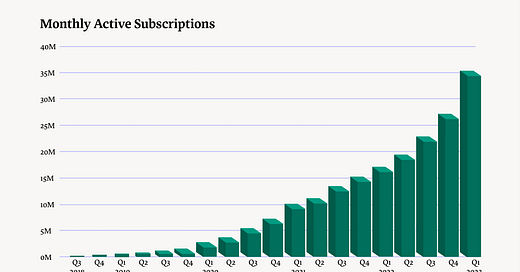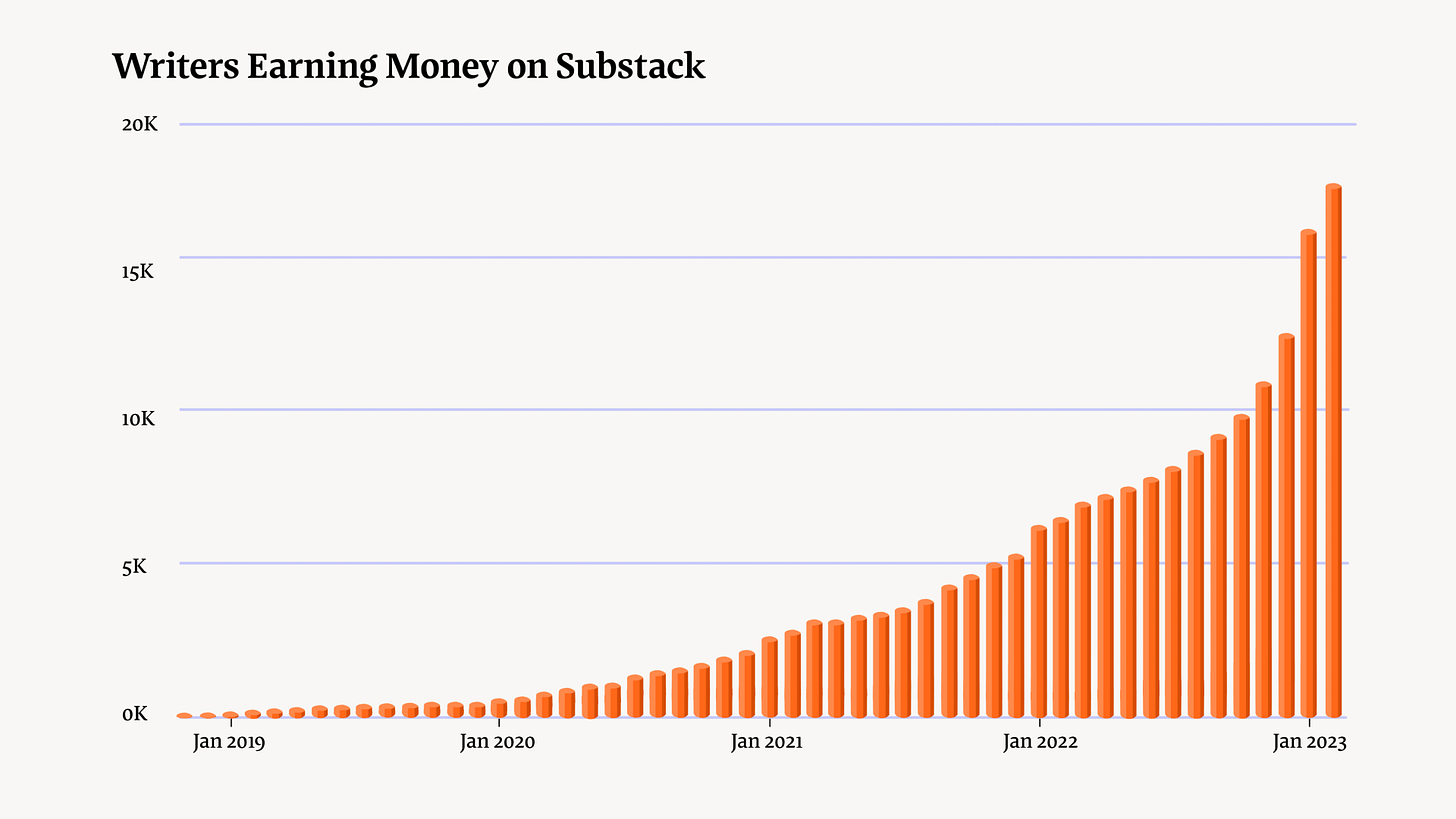My Bet on Substack: Why Writers Like Me Want to Give Substack Our Money
Substack is raising $2 million from writers and paid subscribers.
When I left Bloomberg two-and-a-half years ago during the pandemic to launch this newsletter, I was betting on myself, but I was also making a bet on Substack.
As a reporter, I have always strived to remain neutral. That’s meant that in the best case scenario, when I have identified a cool early-stage startup, I have built some cred with a prescient story.
But I’ve never tried to invest in startups because I want readers to know that I’m giving them my unbiased opinion, not pushing my investments.
Back in 2020, I made a different kind of bet on a startup. Working from home during the pandemic, I saw a trend that finally applied to me. Instead of writing a story about it, I decided to actually seize on the insight and hop on a promising new platform.
I called up fellow tech writer
to tell him that I was going to start a Substack. He told me that he was about to announce a Substack of his own.A few days later, the New York Times dropped a trend piece about writers starting Substacks with his face on it. Then, a month later, I quit my job to launch this newsletter.


A year later, in 2021, Substack raised $65 million at a $650 million valuation in a round led by existing investor Andreessen Horowitz. The newsletter economy was riding high.
But the sense of inevitability didn’t last long.
By 2022, startup valuations cratered — as I have documented in this newsletter. Substack scuttled an attempted funding round and laid off 14% of its staff.
Even so, my business continued to grow. Last year, it brought in about $310,000 in net revenue.
While the fundraising environment is tough for startups, Substack has felt like it’s on a tear lately. It’s released chat, podcast and video features, an app, and a recommendation system.
Last year, thanks to Substack’s recommendations feature my free signups began to climb more rapidly. I reached 50,000 total signups early this year.
So when I sat down with Substack co-founder Hamish McKenzie and another Substack employee last week in San Francisco, I was effusive. I told them how appreciative I was for everything Substack had done for me so far. None of this would have happened without them.
Monday, Substack sent me an unexpected piece of news: I had the option to make a small investment in the company at a $585 million valuation — the pre-money price of the 2021 fundraising round. On the crowdfunding platform Wefunder, Substack is raising $2 million from writers and paid Substack subscribers.
I’ve decided to invest $5,000.1 It's a minuscule sum of money in the world of startup investing.
I’m already compromised when it comes to Substack. They’ve made my job possible. And while I already have plenty of financial exposure to Substack’s performance just by dint of running my business on Substack’s platform, I’m eager to have a chance to show my support.
As part of raising the crowdfunding money, Substack will have to reveal its audited financials. Until then, Substack says that its writers have 35 million monthly active subscribers and 2 million paid subscriptions.
Readers have paid writers on Substack more than $300 million since Substack’s founding. That total includes Substack’s cut, which is 10%.
That 10% fee is my real investment in Substack, of course. People sometimes ask me why I’m on Substack instead of a cheaper publishing platform. In the early days, my answer was because I could get Substack on the phone and get their advice. Even though that’s still true, my answer shifted to their recommendation feature once it started powering my free signups growth. But really, I’m on Substack because there’s a sense that there’s always a new feature on the way — that suddenly my business could get better because they had a great idea.
I spoke briefly with Substack CEO Chris Best Monday about the small funding round.
“It’s not a huge amount of money. This is not changing the trajectory about what’s possible,” Best told me. “It’s more about giving the writers a chance to participate.”
Best said he’s still trying to build a Facebook-sized business and believes the company is on an upswing.
“The way that I think about this is, we’re trying to build a new economic engine for culture,” he said. “If we are correct about what we’re doing — it’s going to be very big. It’s going to be more like Facebook-scale than New York Times-scale. That’s how we’re thinking about the company.”








@EricNewcomer @CaseyNewton you are market makers, reporting on well "market makers". Great to see your collective success. Many journalists join outlets from big media players to independent roles using Substack that provide them with a platform to share their voice. You both are the rare occurrence like I have shared with @KaraSwisher in her career that is THE platform regardless of where you practice your craft. Godspeed and hope the $5K turns into an epic vacation, home and or college tuition for a future kid for you personally Eric!
I'm a big fan of what Substack has *built*, but the *investment* just seems a good bit sleazy.
Look at the financials: https://twitter.com/Travis_Jamison/status/1644361615997804545
Whether intentional or not, they definitely appear to be taking advantage of less sophisticated investors. This valuation is miles higher than an actual VC would pay.